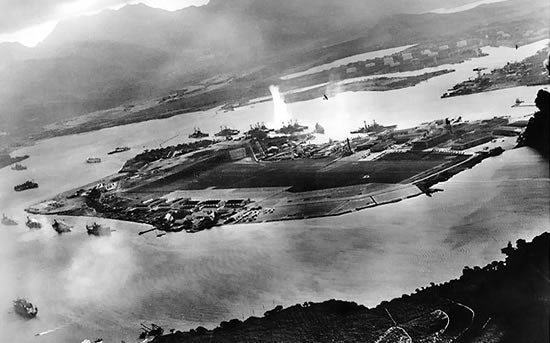Reflecting on America’s Resolve: 72nd Anniversary of Pearl Harbor Attack
Brian Slattery /
Today marks the 72nd anniversary of the attack on Pearl Harbor. As Americans reflect on what President Franklin D. Roosevelt called “a date which will live in infamy,” let us also remember the resolve Americans and the U.S. military showed in response.
The attack killed over 2,400 Americans, destroyed nearly 200 aircraft, and sunk or damaged eight battleships. Japanese officials intended to maim the U.S. fleet to deter America from fighting Japan’s advances in the Pacific, but they failed to account for the resiliency of the American spirit.
Six of the sunken battleships were quickly resurrected from the sea bed, and fortunately, the U.S. aircraft carriers were not in Pearl Harbor that day, thus preserving one of America’s most important naval assets. While the Japanese hoped the attack would bring the U.S. to its knees, Americans responded undeterred. Leading up to the Battle of Midway, Admiral Chester W. Nimitz promised “to meet our expected visitors with the kind of reception they deserve.”
Admiral Nimitz recognized one major strategic weakness in the Pacific Fleet: the U.S. Navy did not have sufficient maintenance capabilities forward deployed in the Pacific. Putting these secondary assets in place proved essential in outlasting the Japanese. In battles such as Coral Sea, Midway, and Tarawa, American aircraft carriers proved to be a decisive factor.
The U.S. Navy today faces similar challenges with both fleet size and maintenance. The shipbuilding budget has been chronically underfunded for years, jeopardizing the production of new carriers, destroyers, submarines, and support vessels. As a result, older ships are kept in the fleet longer and deployed longer without maintenance. Fleet readiness has fallen. For example, mechanical failures forced the USS Essex, an amphibious assault vessel, to cancel numerous deployments. One mechanical failure even resulted in the Essex colliding with a tanker.
These and other military readiness concerns have arisen because the Obama Administration has not made national defense a priority. Beginning in 2009, the White House has directed cuts of hundreds of billions of dollars from the Department of Defense, while not offering strategic reasons for those cuts.
In contrast, the Vinson-Walsh Act, passed in 1940, solidified America’s strategy to be a two-ocean navy. This act robustly funded the Navy and created a force that would outlast the adversaries of the day. It built up the fleet that eventually won World War II. However, today, some Members of Congress are pushing to reduce America’s carrier fleet, which would undermine U.S. military power as the President draws down forces in all branches of the military.
As Americans reflect on that day of infamy in 1941 and appreciate how the “Greatest Generation” responded, we cannot lose sight of the threats that exist today. The U.S. government needs to remember its constitutional responsibilities to provide for the common defense and to provided and maintain a Navy to protect America’s homeland and preserve freedom of the seas.

